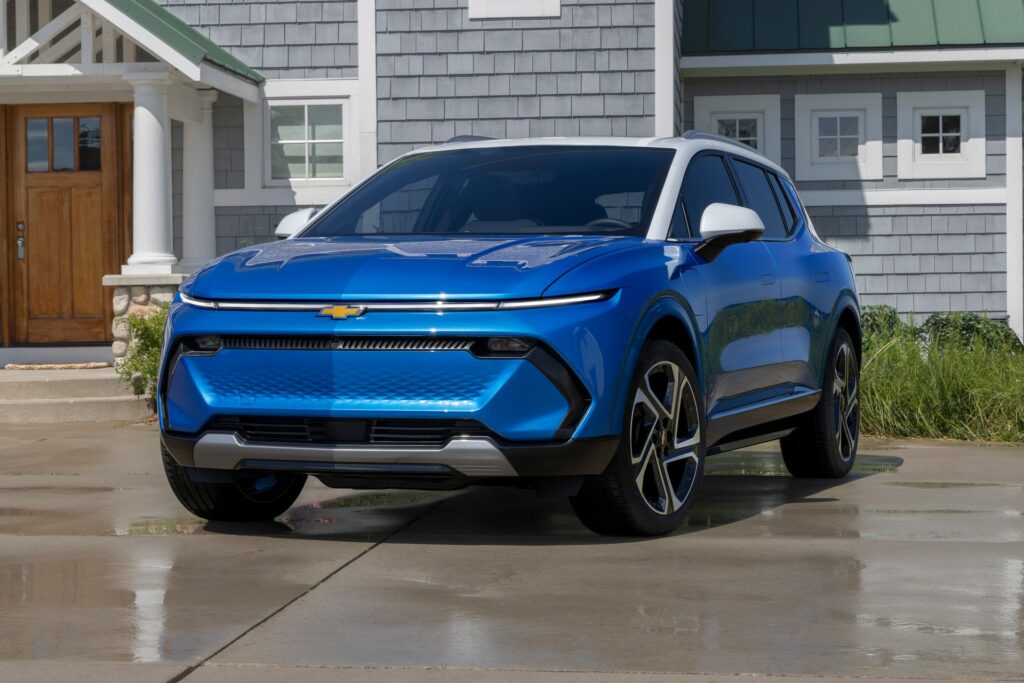MG Storms Goodwood With Two New EVs And A Sexy Roadster
- MG has introduced the new IM5 and IM6 at the Goodwood Festival of Speed.
- The electric crossover and liftback sport slick styling and up to 742 hp.
- The company also unveiled the Cyber X concept, which previews their new styling direction.
MG has used the Goodwood Festival of Speed to introduce two new models, a concept, and an apparent styling exercise. The company also showcased the EX4, which is a reimagining of the Metro 6R4 rally.
Starting with the IM5 executive liftback, it’s an aerodynamic EV that vaguely recalls the Porsche Taycan. It features soft flowing curves, flush-mounted door handles, and a low drag coefficient of 0.226.
More: China’s Most British Roadster Freshens Up For 2026
Buyers will also find a panoramic glass roof and 19-inch wheels with an aerodynamically optimized design. The model also sports a prominent spoiler, LED taillights, and a liftgate that opens up to reveal a 16.1 cubic foot (457 liter) boot.
MG didn’t say much about the interior, but it has a 26.3-inch screen that functions as a digital instrument cluster and infotainment system. The screen supports Android Auto and Apple CarPlay, and is accompanied by a lower 10.5-inch touchscreen.
The IM5 has heated and ventilated “leather-style” seats and a 20-speaker audio system. We can also see metallic accents and a wireless smartphone charger.
MG didn’t release detailed specifications, but confirmed the IM5 will be offered with 75 and 100 kWh battery packs as well as single and dual-motor all-wheel drive systems. The 100 kWh Long Range variant can travel up to 441 miles (710 km) on a single charge. When the battery is low, it can go from a 10 to 80 percent charge in just 17 minutes.
The company also confirmed a Performance variant with 742 hp (553 kW / 752 PS) and 591 lb-ft (802 Nm) of torque. It enables the model to rocket from 0-62 mph (0-100 km/h) in 3.2 seconds.
Pricing starts at £39,450 and climbs to £48,495 for the Performance variant.
IM6 SUV
The IM6 is essentially a taller IM5 positioned as an SUV. As a result, it has a familar design but sports cladding and a revised front end. The model is also a tad more spacious as it has 23.5 cubic feet (665 liters) of cargo space.
Power comes from a 100 kWh battery pack, which delivers up to 388 miles (624 km) of range. Rear steering is standard and the Performance variant can hit 62 mph (100 km/h) in 3.5 seconds.
Pricing starts at £47,995 and jumps to £50,995 for the Performance version. There will also be a Launch Edition for £52,995.
Cyber X
Besides production models, MG showed the Cyber X. Designed to preview the brand’s new design language, the concept is a boxy electric “urban explorer.”
It features a nearly vertical front fascia with a full-width light bar and headlights that can apparently be hidden by covers when not in use. Further back, there are blacked out A-pillars and a stylish greenhouse. They’re joined by sleek bodywork, muscular fenders, and flush-mounted door handles.
Rounding out the highlights are a panoramic glass roof and plastic body cladding. They’re joined by aerodynamic wheels that are wrapped in meaty tires.
Cyberster Black
Last but not least is the self-explanatory Cyberster Black. It features a “luxurious black finish” thanks to a premium paint process that is usually reserved for luxury cars. MG didn’t go into many specifics, but said the paint has ultra-fine glass particles that help to create a subtle sparkle as well as a “shimmering effect” when in motion.
Besides the fancy paint, the roadster has been equipped with chrome wheels that contrast with red brake calipers. The model also has an all-black interior.


































